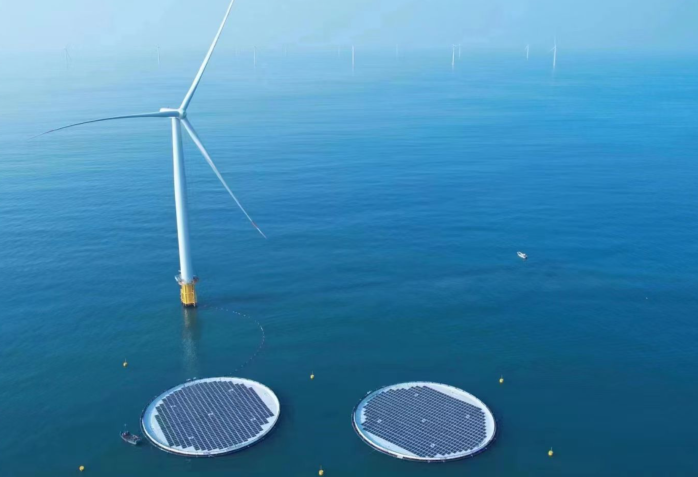Scientists in Spain have created a new index that reportedly help project developers to identify better areas in the initial phase of the development of hybrid windplossing power plants. It is claimed that the proposed approach avoids shortcomings of earlier criteria and overestimation caused by time delays.
Researchers from the Public University of Navarre of Spain have proposed a new method to evaluate areas for the offshore installation of hybrid wind and PV energy plants. The novelty of their approach lies in the integration of a new complementarity, which evaluates how well the two energy sources balance each other.
“In general, complementarity between two concepts or variables is interpreted as the situation in which the joint confluence of both in a certain aspect improves each individually,” the researchers explained. “In the context of wind and solar energy, the general consensus that complementarity occurs when the shortage of one source is compensated by the availability of the other.”
The new index for evaluating the complementarity of resources is called CIWS_align and is based on the wind and solar complementarity index (CIWS), which was developed for a hybrid project in Oklahoma in 2011, and a dynamic time warping (dtw) -technique and technique and technique and technique and technology and technology and technology and technology and technology and technology and technology and technology and technology and technology and technique and Solarijwaves. The inputs for this index have been taken from the ERA5 data set and the Copernicus Atmospheric Monitoring Service (CAMS). The output is a number that represents the degree of complementarity.
“The Ocean-H2 project is an industrial research project, the objective of which is the design and validation of the first offshore green hydrogen generation, storage and distribution factory of Spain,” the researchers said. “Motivated by the objectives of this project and the growing interest in offshore renewable generation, the current methodology has been developed in the Spanish Offshore area.”
To demonstrate the effect of absorbing the weight of complementarity, the team has searched for a location around Spain to install a project of 80% wind and 20% solar energy. With the help of the traditional method, this ratio also presented the weight of solar and wind capacity. With compression, however, they add a weight of 15% in complementarity statistics, which changed the weight to 68% wind, 17% floating PV and 15% complementarity.
“There are changes when complementarity has been taken, for example, the area in northwestern Spain reduces its suitability such as some areas in the Mediterranean Sea, but the most suitable zones, such as those in Northeast or South Canary Islands, as general, their ranking,” emphasized the Academic Academic States. “Moreover, we can identify the preferred areas by selecting the 10% locations with a great value of suitability (percentile 90%) in both cases.”
A further look was then taken at the Tarifa Gulf, the South Iberian Peninsula. The location in a rank without a complementarity matric (P1) has an annual average wind speed of 8.88 m/s and a daily average global horizontal irradiation (GHI) of 4,668 kWh/m2. On the other hand, the area with the rank with a complementarity matric (P2) has a wind speed of 8.64 m/s and a solar radiation of 4,925 kWh/m2.
“Although these values do not significantly differ in terms of resources, the situation changes when observing daily profiles in the long term at the same time,” the group 2 shows a high complementarity with the opposite effects of both series, while at point 1 complementarity is observed due to a small delay between the drugs. “
Finally, the academics have carried out a sensitivity analysis that focuses on the top 10% of the locations where the new approach was found. In it they gave complementarity statistics a value of 10%, 15%or 20%. All cases were tested with wind weight ranging from 10% to 90%, while PV was justified for the difference. These changes have influenced the top 10% locations with 7.9% to 41.1%.
“The methodology can be seen as a starting point of a more complex method, including more than two energy sources and that could take different timing into account to analyze their complementarity,” concluded the scientists.
Their findings were presented in “A new method to easily integrate complementarity criteria into the resource assessment process for hybrid power plants: offshore wind and floating PV“Published in Energy conversion and management: X.
This content is protected by copyright and may not be reused. If you want to work with us and reuse part of our content, please contact: editors@pv-magazine.com.

